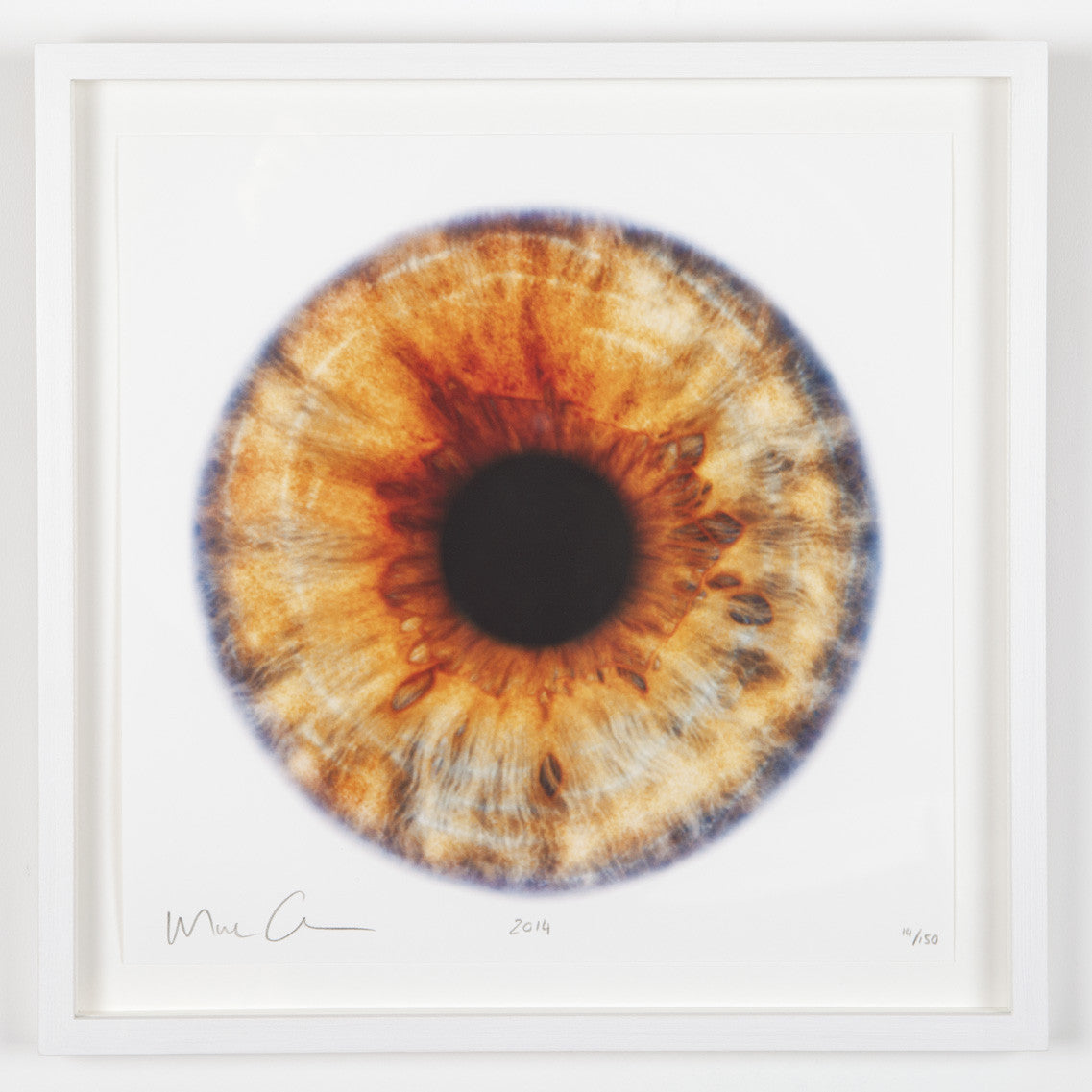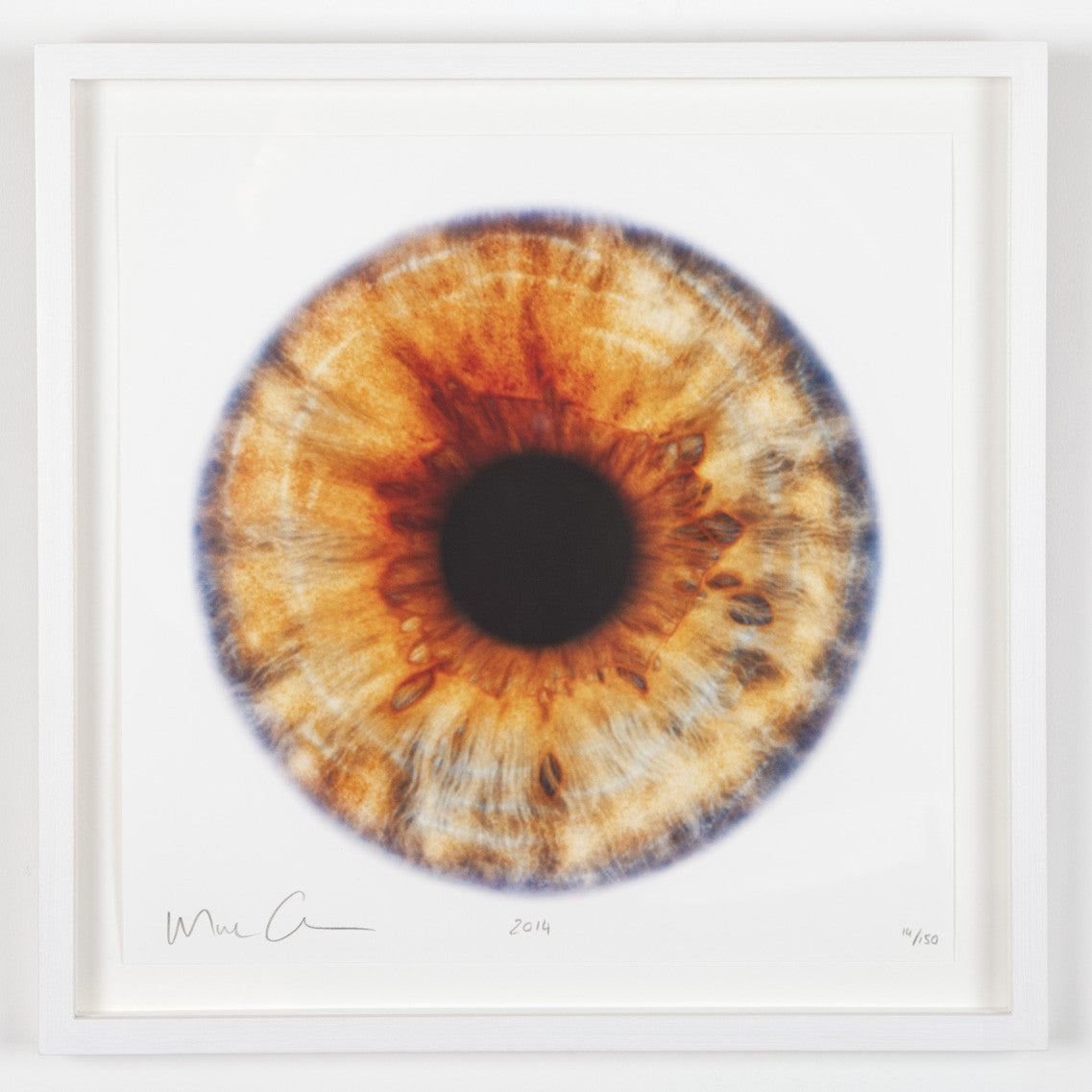Marc Quinn
We Share Our Chemistry With The Stars (SQ200R) - Print Edition
We Share Our Chemistry With The Stars (SQ200R) - Print Edition
Couldn't load pickup availability
2014
260 x 260 mm (print size)
Edition of 150
Pigment print on 300gsm Somerset Photo paper
Hand signed and numbered on the front
Framing option is a white wooden frame with UV conservation glass. It may take up to two weeks as they are bespoke, but please contact us if you have a deadline.
Marc Quinn refers to the eyes as "the doors of perception, the portal between inner and outer, and the link between us and the world". The iris paintings are about individuality, irises are as singular as fingerprints.
"They are also one of the few external parts of the body which are highly coloured, or more correctly they are the only internal organ you can see from the outside, and the only one which has the strong vivid colours of the inside of the body, the strong reds, blues, greens, yellows and oranges. They are a leakage of the vivid interior world of the body to the monochrome world of the skin."
Shipping
Shipping
Costs of shipping calculated at checkout.
The editions are produced in and shipped from the UK.
Delivery fees and custom duties are the responsibility of the customer.
Delivery time 2-3 weeks for unframed variants and 4-5 weeks for framed variants.

Iris Works
The Iris paintings reflect the fact that, in the age of the internet, the visual sense dominates our perception of the world. The eye is traditionally seen as a mirror of the soul but it is also a kind of microscopic map of an individual's identity, since each person's is unique. In these works, Quinn depicts an iris at close range, in a photorealist, non-expressive way on a round canvas. The eye is enlarged so that it appears virtually abstract and the pupil appears like a aperture or hole in the centre of a fine, detailed network of colourful lines. Quinn was interested in the idea of making ‘stealth’ portraits of people, at once universal and unique, and not just an image of the sitter, but an actual visual index of their identity.
The artist observes: "The etymology of 'iris' is derived from the Greek word for 'rainbow'. And in the colours, even in quite subtle, dark colours, there is a kind of celebration of individuality." Furthermore, "in the middle you have that black hole of the pupil [and] all of the mystery and uncertainty of life. It’s a very profound expression of the ambiguity which is at the heart of our existence. "Also of interest about the eye is its position as the only internal organ you can see from the outside, as Quinn remarks: "The iris is in a way our doorway to the world, it is the window we see out of and the doorway for light to enter and interact with our nervous system. They are like a leakage of the vivid interior world of the body to the monochrome world of the skin."
In the works Map of Where You Can't See the Stars and Eye of History, Quinn has added a world map over the image of the eye. These works comment on the paranoid world we live in, and the notion of 24 hour news where the whole world is connected through ever-present media and syncopate this with notions of our eroding and changing geographical world. They present images of the world map from various perspectives – such as the Arctic – displaying how the boundaries of experience and geographical territory as we know them are rapidly changing.

